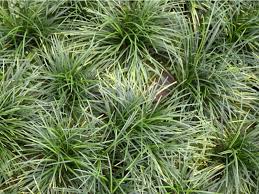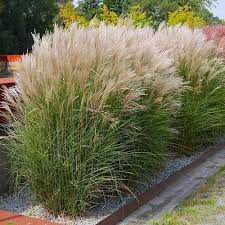Small ornamental grasses are delightful additions to any garden or landscape. These graceful and versatile plants bring beauty and texture to outdoor spaces, making them a popular choice among gardeners of all levels. With their compact size and easy maintenance, they are perfect for adding accents, borders, or filling in tight spaces.
One of the key advantages of small ornamental grasses is their low maintenance requirements. They are generally drought-tolerant once established, making them ideal for regions with limited water availability. Their hardiness also allows them to thrive in various soil types, from sandy to clay, and they can withstand a range of weather conditions, including hot summers and cold winters.
Another appealing aspect of small ornamental grasses is their diverse array of colors, shapes, and textures. From the vibrant green blades of Japanese Forest Grass (Hakonechloa macra) to the golden hues of Dwarf Fountain Grass (Pennisetum alopecuroides ‘Hameln’), these grasses add visual interest to any garden. Some varieties even offer striking foliage changes throughout the seasons, creating an ever-changing landscape.
For those seeking to attract wildlife to their gardens, small ornamental grasses can be a boon. These grasses provide nesting spots and cover for various insects, which, in turn, attract birds and butterflies. Additionally, the gentle rustling of their leaves in the breeze creates a serene and soothing ambiance, making them perfect for relaxation spaces or Zen gardens.
When it comes to design, small ornamental grasses can be utilized in various ways. Planted in groups, they create beautiful borders that define different areas of the garden. They also complement larger plants and flowers, enhancing the overall aesthetic. Moreover, these grasses can be grown in containers, bringing greenery to balconies, patios, and rooftops.
Caring for small ornamental grasses is relatively simple. Regular watering during their establishment phase is crucial, but once they have developed strong roots, they become more self-sufficient. Trimming them back in late winter or early spring before new growth appears helps to maintain their tidy appearance. Mulching around the base helps to retain moisture and suppress weed growth.
However, small ornamental grasses are fantastic options for gardeners looking to add charm and elegance to their outdoor spaces. With their adaptability, low maintenance needs, and ability to attract wildlife, they are a valuable addition to any landscape. Whether you have a large garden or a tiny urban plot, these versatile grasses will thrive and captivate your senses throughout the seasons.
Read Also: Factors to be considered before Cross-Breeding
Growing and Care Guide of Small Ornamental Grasses

Below are the growing and care guide for small Ornamental Grasses:
1. Location and Soil: Choose a sunny spot in your garden for small ornamental grasses. Most varieties prefer full sun, although some can tolerate light shade. Ensure the soil is well-draining to prevent waterlogged roots. These grasses can adapt to different soil types, but adding organic matter can improve soil structure and fertility.
2. Planting: Plant small ornamental grasses in the spring or fall, when the soil is workable. Dig a hole slightly larger than the root ball of the plant. Gently remove the plant from its container and place it in the hole at the same depth it was in the pot. Fill the hole with soil, pat it down gently, and water thoroughly.
3. Watering: While establishing, keep the soil consistently moist but not waterlogged. Once established, these grasses are generally drought-tolerant, but they will benefit from occasional watering during prolonged dry spells.
4. Mulching: Apply a layer of mulch around the base of the plants to retain moisture, regulate soil temperature, and suppress weed growth. However, avoid piling mulch against the grasses’ stems, as this may lead to rot.
5. Pruning: In late winter or early spring, before new growth begins, trim back the grasses to about a few inches above the ground. This will rejuvenate the plants and promote healthy new growth. Some varieties may require more frequent pruning to maintain their tidy appearance.
6. Fertilizing: Small ornamental grasses generally do not require heavy fertilization. Applying a balanced, slow-release fertilizer in early spring can provide them with the necessary nutrients for the growing season.
7. Pests and Diseases: These grasses are generally resilient to pests and diseases. However, keeping the garden clean and removing any debris can help prevent potential issues. If you notice any pest infestation or disease symptoms, promptly address them with appropriate treatments.
8. Winter Care: Most small ornamental grasses are hardy and can withstand cold temperatures. However, for added protection, you can mulch around the base of the plants before winter sets in. This will help insulate the roots and prevent damage from freezing temperatures.
9. Division: Over time, small ornamental grasses can become crowded. Dividing them every few years (usually in early spring or early fall) can rejuvenate the plants and promote better growth. Carefully dig up the clump and separate it into smaller sections, each with its own set of roots, and replant them.
10. Garden Design Ideas: Experiment with various combinations and groupings of small ornamental grasses to create visually appealing landscapes. Pair them with colorful flowering perennials, shrubs, or annuals for stunning contrast. Utilize their varying heights and textures to create layered and dynamic garden beds or borders.
By following this growing and care guide, you can enjoy the beauty and low-maintenance qualities of small ornamental grasses, adding a touch of elegance and charm to your garden throughout the seasons. Happy gardening.
Read Also: Find out which of the Ruminant Breeds is better to raise
Tall Ornamental Grasses for Privacy

Tall ornamental grasses are a fantastic and natural way to create privacy in your outdoor spaces without the need for walls or fences. With their impressive height and dense foliage, these grasses offer an effective screen that not only enhances your privacy but also adds beauty and serenity to your surroundings.
One of the significant advantages of using tall ornamental grasses for privacy is their ability to grow to considerable heights, often reaching 6 to 10 feet or more. This substantial height makes them ideal for blocking unwanted views, shielding your garden from neighbors or busy streets, and creating secluded areas where you can relax and unwind.
There is a wide variety of tall ornamental grasses to choose from, each with its unique characteristics. For instance, the graceful plumes of Feather Reed Grass (Calamagrostis x acutiflora) create an elegant and feathery screen. The fast-growing Pampas Grass (Cortaderia selloana) offers a dense and dramatic barrier, while the airy inflorescences of Switchgrass (Panicum virgatum) provide a more delicate and natural look.
Tall grasses also bring movement and sound to your garden. As the wind gently rustles through their leaves and plumes, they create a soothing and calming atmosphere, adding an element of tranquility to your outdoor space.
In addition to their privacy benefits, tall ornamental grasses are relatively low-maintenance. Once established, they are generally drought-tolerant and require minimal watering. They are also quite hardy and can withstand a range of weather conditions, from scorching summers to chilly winters.
Planting tall ornamental grasses is straightforward. Choose a sunny spot in your garden with well-draining soil. Plant them in groups or clusters to create a more effective privacy screen. Make sure to give them enough space to grow to their full height without crowding each other.
As they grow, tall ornamental grasses may require some maintenance. In late winter or early spring, trim back the old foliage and plumes to make way for new growth. This annual pruning also prevents the plants from becoming too top-heavy and potentially falling over during strong winds.
Tall ornamental grasses are not only practical but also aesthetically pleasing. Their graceful forms and captivating textures add an architectural element to your landscape design. Whether you have a modern, cottage-style, or wild garden, tall grasses can fit seamlessly into various garden styles.
In conclusion, tall ornamental grasses offer an excellent solution for creating privacy in your outdoor spaces while adding beauty and tranquility to your garden. Their impressive height, low-maintenance nature, and diverse variety make them a popular choice among gardeners seeking both functionality and aesthetics. Consider incorporating tall grasses into your landscape design to enjoy a private sanctuary that brings you closer to nature.
Read Also: How to Choose the Right Waste Management Company Near Me/You





